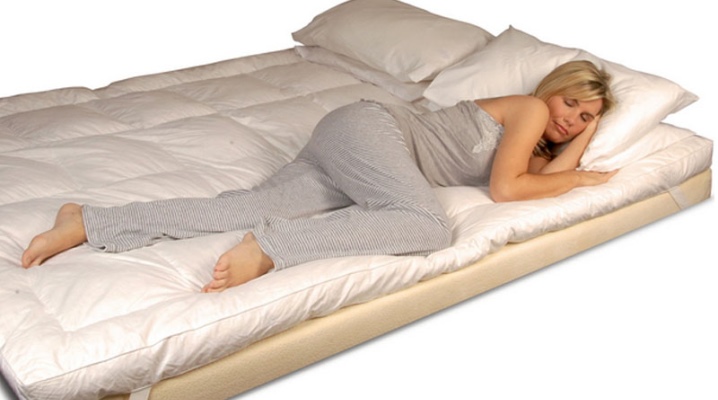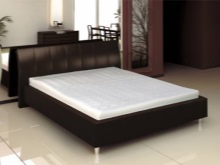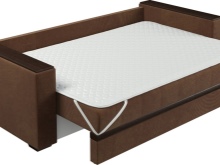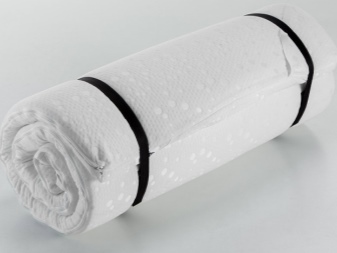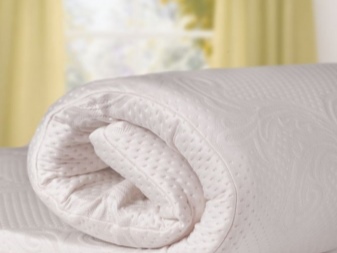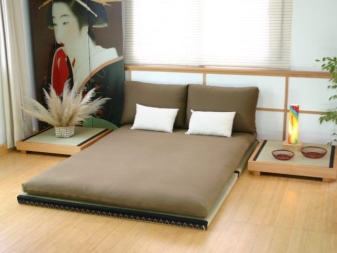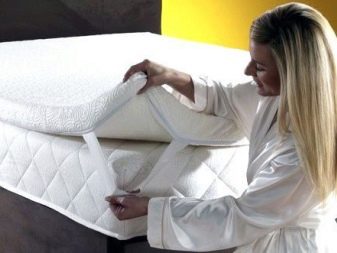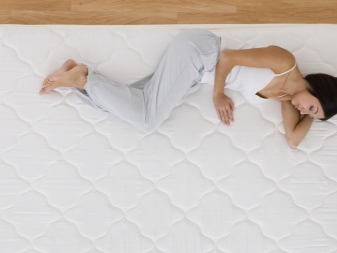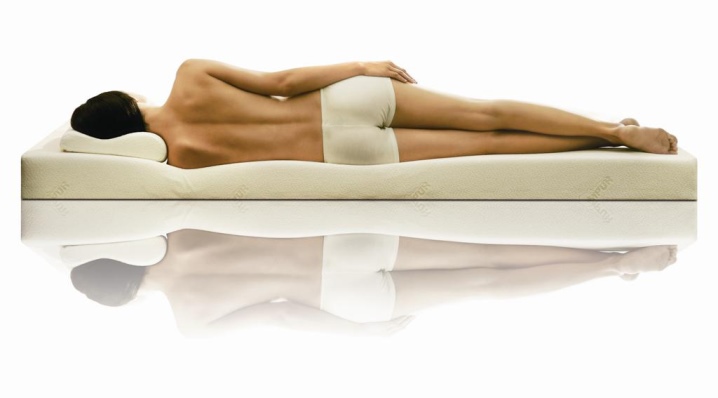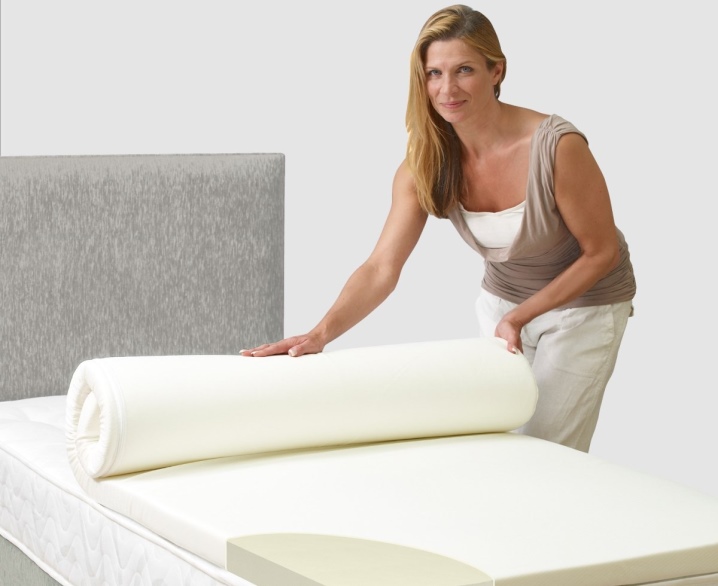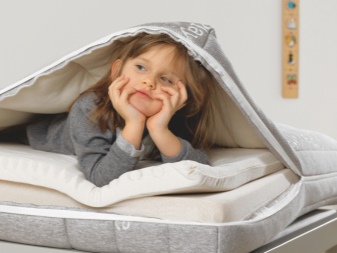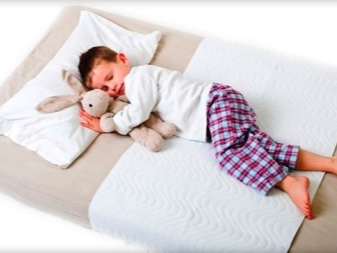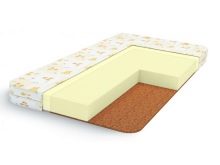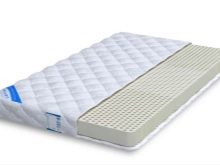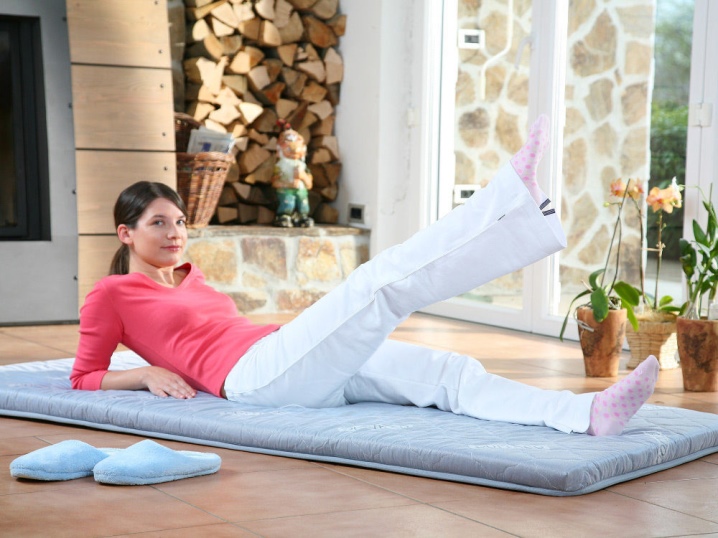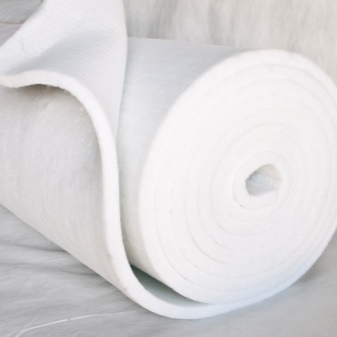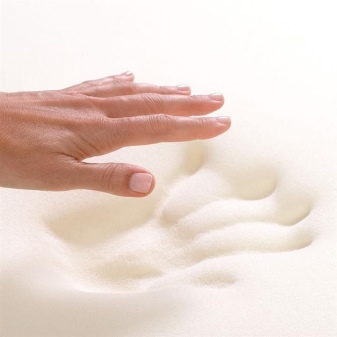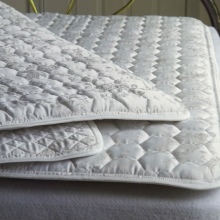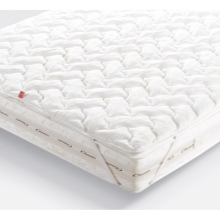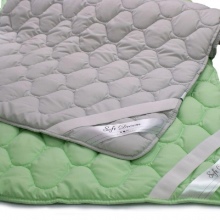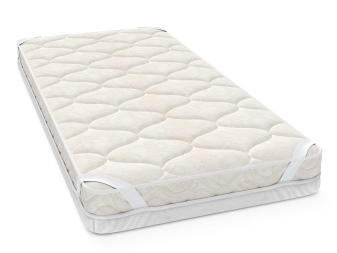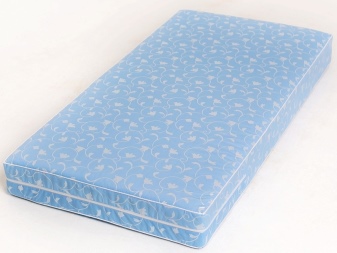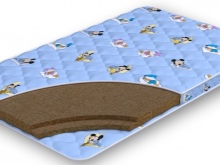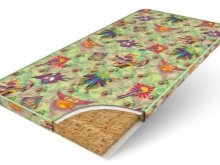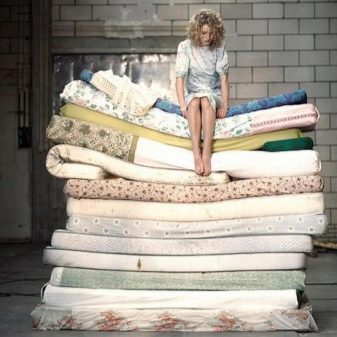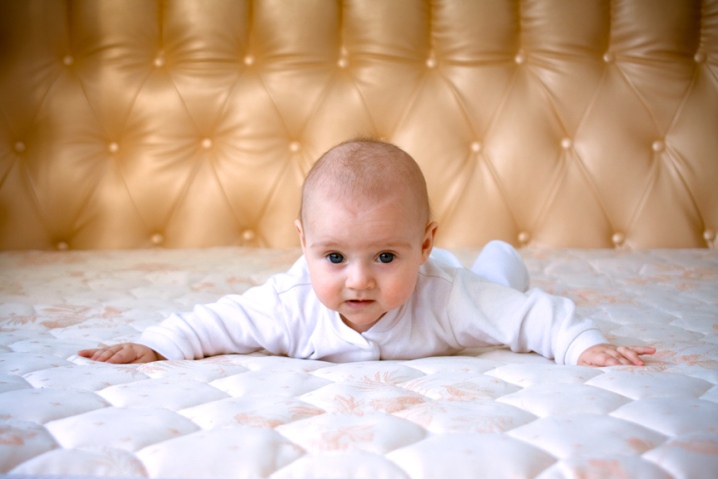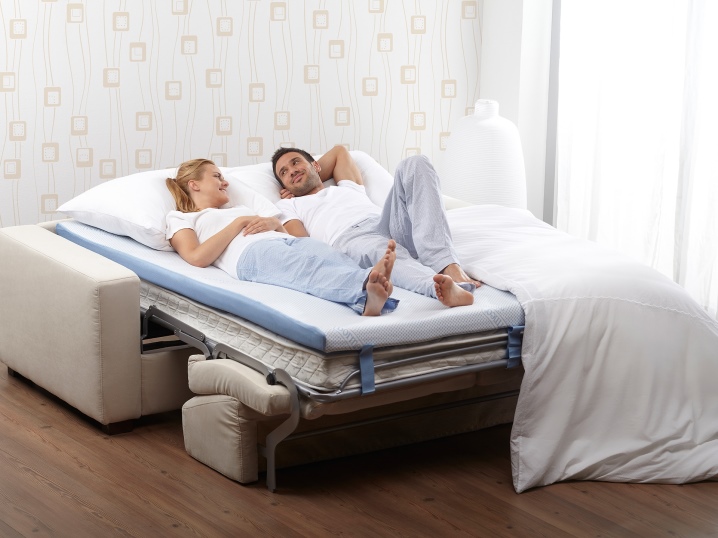Thin mattresses
Modern man knows how to organize a bed in any conditions and dimensions of the room. If necessary, even such a peculiar object as a topper can be used. These thin mattresses originate from the XIII century, appearing for the first time in Japan. Then they represented a bed from a blanket and a mattress for the poor layer of the population of the country. Today, people use only mattresses, and the use of such mats often helps out in everyday life, and the toppers themselves have a number of features.
Advantages and benefits
Despite the small thickness of the mats (from 2 to 9 - a maximum of 10 cm), they are analogous to the usual blocks for the bed. However, their difference from full-fledged models lies in the fact that thin mattresses, being an independent accessory of furniture, are more often intended to complement existing mats, be it a sofa or a bed (and in some cases a folding bed).
Such designs are adopted by the manufacturing companies offering them as an alternative to the guest and dacha variants when it is necessary to arrange guests for the night. Although by themselves these mats are not able to replace the mattress or sofa unit, they have several advantages. Thin mattresses:
- they are springless constructions;
- in connection with the absence of metal inside, they are harmless and safe for health (they are free from irritating squeaking, static electricity, and springs looking upwards);
- made from environmentally friendly natural, hypoallergenic synthetic raw materials;
- differ in varying degrees of rigidity;
- have a small difference in the thickness of different models;
- most products have compact dimensions and low weight, due to which they are mobile and unpretentious in storage and transportation;
- depending on the type of stuffing, they can serve for quite a long time (up to 15 years with proper operation);
- performed with different effects to give rest more comfort;
- have a special cover (made of textiles with a softening addition, removable, with thermoregulation);
- differ in a variety of shape and size;
- are irreplaceable participants of the interior in the oriental style;
- in small-sized types of rooms they perfectly save usable space, providing a bed for the night;
- manufactured in a mass and individual way (to order at the request of the client);
- may have additional clamps, due to which they are securely fastened to the surface of a berth and do not slide;
- have different cost, from budget to premium options.
The purpose of the thin mattresses is to provide an even sleeping place both on the floor and on the existing furniture.
Such accessories:
- adjust the degree of comfort of the surface of the bed, adding convenience to it, having a different density and thickness of the filler, contribute to the proper support of the spine during sleep;
- having a different density and thickness of the filler, contribute to the proper support of the spine during sleep;
- close the folded modules or blocks of the sofa, forming a full-fledged sleeping bed without joints and slots;
- cover the problem areas of the deformed mattress, formed as a result of intensive or long-term operation;
- vary the rigidity of the existing blocks, giving the desired density;
- able to extend the life of basic mattresses, as a kind of mattress toppers;
- Depending on the model, they can be an easy prophylaxis of back diseases, removing or reducing pain.
Thin mattresses are designed for users of different ages. Today, brands offer a wide range of products for children and adults. The second designs are single and double.
Thin mattresses are truly unique. However, they also have disadvantages:
- not all types of topper packings are designed for intensive and daily use;
- these mats need proper care and careful use;
- thin elastic mattresses are able to roll up into a roll, however, if you do it all the time, the mat will not last long;
- rigid structures do not provide for folding, and therefore are inconvenient in storage and should always be placed on top of the main mattress;
- if the surface of the sofa is not provided for sleep and has a large relief, thin mats can not align it by 100%;
- have an additional effect only in expensive models;
- even with a sufficient thickness of the block, they are not always comfortable (if they are located on a bare floor).
Thin mattresses are not designed for people with excess weight. Of course, mats can temporarily correct an existing surface of a berth, but due to the small thickness of the block, rigid structures can break, and soft ones can bend under the weight.
Kinds
All thin mattresses are performed exclusively on a springless basis. According to the structure of the block They can be divided into two types:
- monolithic;
- compositional.
Monolithic options - the simplest. These are simple layers of the same material, packed in a fabric cover (as a rule, with a softening lining). The second products are divided into two categories: combined and puff. In combined systems, the core has a greater thickness, and the additional component is used to impart optimum rigidity (softness).
In the layered version of the block, more than 3 gaskets of different composition are used, and it can be either the same or different from both sides.
If we consider the different effect of thin mattresses, which manufacturers are proud of today, then in addition to the classic (standard) products, the following brands are produced models:
- bilateral - with varying degrees of rigidity (a great option for those who like to change the rigidity of a sleeping bed);
- orthopedic - products that can ensure uniform distribution of the load on the body (contributing to the correct formation of spinal curvatures in toddlers and children of preschool age);
- temperature controlled - options due to which it is not hot in summer, and it will always be warm in winter;
- with memory effect - anatomical products of viscoelastic foam that can memorize the contours of the body, taking the desired shape when heated.
In addition, companies are developing special designs for exercises. Such mattresses are usually folding, they are designed to be placed on the floor.
Fillers and upholstery
The padding of thin mattresses (inside contents) is made of the same materials as all springless mattresses. The best types of topper filler today are:
- natural latex - porous filler with a cellular structure, very elastic and elastic, with an orthopedic effect;
- synthetic latex - analogue of natural, more rigid;
- coconut fiber - natural material of fibrous type from coconut peel, very hard, to maintain the structure impregnated with latex;
- struttofiber - thermal type of fiber, characterized by good orthopedic characteristics;
- polyurethane foam (furniture PU type HR) is a budget alternative to latex, having a high elasticity, rigidity, homogeneous structure without cavities;
- memory foam - medium stiff viscoelastic polyurethane with orthopedic effect and ability to remember the shape of the user's body;
- wool (sheep or camel) - an additional component of the natural origin of bilateral structures to give them a thermal and preventive effect.
All types of filler are perfectly combined with each other, allowing you to create composite structures with the desired characteristics.
The best components of the block are latex and coir. The combination of these packings allows you to create a thin mattress with excellent orthopedic properties.
These models can be used not only on the bed, but also for sleeping on the floor.
As for the upholstery, it is made of cotton, coarse, wool, sometimes with the addition of synthetic fibers. Such fabrics are the best for sleeping, they exclude slipping of linen on the bed and picking it up in a pile.
Dimensions
Parameters of thin mattresses depend not only on the size of the bed. They are bought in accordance with the weight of the user and the number of beds. Dimensions of these mats are indicated in centimeters (some companies in millimeters, for example, 1600x2000 mm).
The length and width of single toppers make up 60x180, 135x185, 90x190, 140x190, 160x190, 80x200, 90x200, 120x200, 140x200, 150x200 cm.
Double products intended for two users have dimensions 160x200, 180x200, 170x200, 200x200, 210x200 cm and more.
Mattress height also matters. The thinnest of them have a height of 2 or 3 cm, however, options with a thickness of 5 to 10 cm are recognized as popular products.
Rigidity
According to the degree of hardness thin mattresses are soft, medium hardness and hard. Consider the most reliable design thickness of at least 8 - 9 cm. In addition to the orthopedic base, they have an elastic additive that allows varying the degree of rigidity. Soft options are meant to add comfort to a firm mattress. This is true for the elderly and sick people. Middling models are the golden mean: their height varies from 6 to 7 cm.
Colors
The standard color of the mattress pad for thin mats is white. It is impractical, even considering the fact that the mat is covered with bed linen. Manufacturers, realizing the importance of shade, offer different tones. Today, products appear in the lines, packed in light gray, pink, pale blue, beige and cream covers, as well as mattress covers in inconspicuous vegetable prints.
Cases for children's models allow colorful raznotsvete. In addition to bright pink blue, green and other colors, they stand out with amusing pictures on children's themes.
Top manufacturers
Choosing a thin mattress, you can refer to the products of proven companies that have gained a lot of positive customer reviews:
- Ascona - anatomical models for children and adults, consisting of a mix of flax, spandbond and viscoelastic foam with memory effect, models up to 8 cm thick for people of different weights;
- Ormatek - high-quality products for the smallest, schoolchildren and adults, made by composite from latex and coconut fiber, having a versatile rigidity;
- Consul - orthopedic thin mattresses with a height of 4 cm, made using foamed furniture polyurethane,latex and coconut fiber, designed for a large weight (up to 120 kg) and equipped with a removable mattress pad with a sinteponovoy layer;
- Rayton - thin models with a height of 4 cm for daily use, made with the use of a latex, coconut layer, memory foam, complemented by a removable mattress cover with a holofiber.
How to choose?
The choice of a thin mattress is not a difficult task, but a solid one. So that the purchase meets the stated requirements and lasts a long time, it is worth considering A number of factors that experts advise to pay attention to:
- preliminary selection of the model on the manufacturer’s sites (consideration of parameters, characteristics, thickness, service life, filler);
- mandatory certificate confirming the quality of a thin mattress, as well as the seller’s warranty (they always have high-quality products);
- size of the model (it is always selected to the parameters of the available furniture and does not need them if it is bought on the floor);
- the presence of a removable cover of dense natural textiles (ideally treated with silver ions or other antimicrobial impregnation);
- no sharp smell of rubber, especially in children's models (the cause of headache, irritation, lack of air and shortness of breath);
- high-quality hypoallergenic composition of the filler (a factor that excludes skin irritation);
- the right choice of mattress stiffness.
If we consider the age and medical indicators, then you should pay attention to the following nuances:
- in the presence of problems of the back, osteochondrosis, impaired posture, blood flow, consultation with the orthopedic surgeon (pediatrician) is obligatory;
- if the model is designed to vary the rigidity of the mattress, it is better to buy a two-sided version with varying degrees of rigidity (this will allow changing the mattress by different sides when you want more comfort);
- those who freeze in the cold season should pay attention to the winter-summer type construction, supplemented with insulation on the one hand and cotton on the other;
- for children, thin mattresses are good as orthopedic options of 8 to 9 cm thickness (not less!) of a monolithic plan (from newborns to three years);
- sick people with osteochondrosis, arthritis are preferable to soft models, as hard mattresses can exacerbate the problem;
- in order not to fall into the joints of the sofa modules, it is better to choose the density of the block as medium hard or hard.
How to care?
Every user knows that respect is the key to the durability of any product. You can not bend mats with inflexible filler, store products in pressed form for a long time, keep them in an unventilated and dark place all the time, removing only occasionally.
In order for the mattress to serve the user longer, it is worth considering a few recommendations. It is necessary:
- periodically change the position of the head and legs;
- clean the unit at home or dry clean;
- to ventilate the unit at least 1 time per month in the open air (balcony);
- turn the mattress to the other side 1 time per month;
- dry exclusively by natural means;
- wash upholstery (if the cover implies washing).
Reviews
Customer opinions about thin mattresses are ambiguous. It seems to some users that their prices are somewhat too high, even if the mattresses themselves are good. Others are confident that such designs are unique, being not only a guest, but also a daily mate option, leveling the surface of the bed and allowing the owners themselves to sit on the sofa or bed more comfortably.
Thin mattresses are comfortable mobility, which is important for users, who often rent accommodation, comments indicate.Some reviews suggest that such mattresses are also relevant for children, however, in this case it is important to choose the optimal height (at least 8 cm) and the natural composition (coir or latex).
All about the main advantages of a thin mattress, see the following video.
